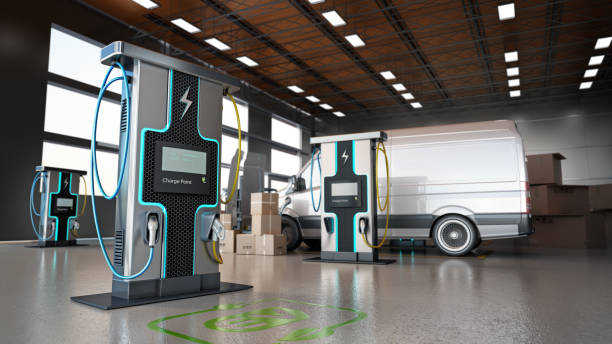In an era dominated by technological advancements, innovation continues to reshape various industries, and the fuel delivery sector is no exception. Smart fuel delivery systems have emerged as a groundbreaking solution, offering enhanced efficiency, convenience, and environmental sustainability. This article delves into the intricate world of smart fuel delivery, unraveling the technological marvels that power these systems and examining the profound impact they have on the way we manage fuel consumption.
I. Introduction to Smart Fuel Delivery Systems
Smart fuel delivery systems represent a fusion of cutting-edge technology with the essential need for efficient and timely fuel supply. Unlike traditional methods, these systems leverage a combination of sensors, connectivity, and data analytics to optimize the delivery process. The overarching goal is to provide consumers with a seamless, automated, and intelligent means of managing their fuel needs.
II. Sensing Technologies: The Eyes and Ears of Smart Delivery
At the core of smart fuel delivery systems lies a network of sophisticated sensors that monitor fuel levels, environmental conditions, and equipment status in real-time. These sensors are strategically integrated into fuel storage tanks, vehicles, and delivery infrastructure, creating a comprehensive web of data points. Through ultrasonic, radar, or pressure sensors, the system gains a precise understanding of fuel levels, enabling accurate predictions and timely replenishment.
III. Connectivity: The Nervous System of Smart Delivery
A key characteristic of smart fuel delivery is its reliance on connectivity. Internet of Things (IoT) technology forms the nervous system that links sensors, devices, and platforms, facilitating seamless communication. This connectivity enables continuous monitoring, real-time data transmission, and remote control, ensuring that fuel delivery operations remain responsive to evolving demands and conditions.
IV. Data Analytics: Transforming Information into Actionable Insights
Raw data from sensors and connected devices is valuable, but the true power of smart fuel delivery systems lies in their ability to transform this data into actionable insights. Advanced analytics algorithms process the information, identifying patterns, predicting consumption trends, and optimizing delivery schedules. This data-driven approach not only enhances efficiency but also reduces the likelihood of supply chain disruptions.
V. Automation: Streamlining Operations for Efficiency
Automation is a cornerstone of smart fuel delivery, significantly reducing the need for manual intervention. Automated systems can monitor fuel levels, trigger delivery requests, and even control dispensing equipment without human involvement. This not only improves efficiency but also minimizes the risk of errors, ensuring that fuel delivery processes are accurate and reliable.
VI. Mobile Apps and User Interfaces: Empowering Consumers
Smart fuel delivery extends beyond the backend infrastructure to include user-friendly interfaces that empower consumers. Through mobile apps, customers can plan deliveries, keep an eye on their fuel levels, and get real-time order status information. Customers are given unparalleled convenience in managing their gasoline demands thanks to this degree of transparency and control.
VII. Security Measures: Safeguarding the Supply Chain
As with any technological system, safety must come first. Robust cybersecurity measures are employed by smart fuel delivery systems to safeguard confidential information, stop unwanted access, and guarantee the accuracy of the distribution procedure. Among the techniques used to protect the whole supply chain are multi-factor authentication, secure communication protocols, and encryption.
VIII. Environmental Sustainability: Reducing Carbon Footprints
Beyond efficiency gains, smart fuel delivery systems contribute to environmental sustainability. By optimizing delivery routes, minimizing fuel waste, and reducing the carbon footprint associated with manual operations, these systems align with the global push for greener solutions. As technology continues to evolve, smart fuel delivery holds the promise of further reducing environmental impact through innovations like electric and hybrid delivery vehicles.
IX. Case Studies: Real-World Applications and Success Stories
Examining real-world applications provides insight into the tangible benefits of smart fuel delivery. Case studies highlighting successful implementations across various industries showcase how businesses and consumers alike have experienced increased efficiency, cost savings, and improved sustainability through the adoption of these advanced systems.
X. The Future Landscape: Evolving Trends and Potential Developments
The direction that smart gasoline distribution systems are taking suggests that innovation will be ongoing in the future. The capabilities of these systems are expected to be significantly enhanced by emerging technologies like autonomous cars, machine learning, and artificial intelligence. Furthermore, the industry’s continued attempts to include renewable energy sources into gasoline distribution operations demonstrate its dedication to a sustainable future.
Conclusion
gasoline management and consumption have undergone a fundamental change thanks to smart gasoline delivery systems. Through the utilization of sensors, networking, data analytics, and automation, these systems provide an insight into a fuel distribution future that is not only eco-friendly but also efficient. The relationship between innovation and fuel distribution will surely build an intelligent and sustainable landscape as technology develops. In addition to being a step toward scientific advancement, the quest to investigate and apply these technologies is also a revolutionary move toward a more integrated and productive future.










